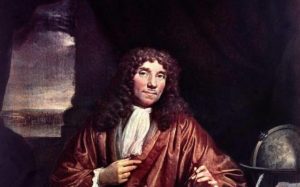Antonie van Leeuwenhoek Biography: While living organisms have been extensively studied for centuries, the discovery that organisms are made up of cells was comparatively new to the world. One of the reasons behind this could be the absence of modem technology laboratory equipment. The 1595 invention of the microscope made the cells visible for the first time.
A short Biography on world Famous Scientists and Their Inventions.

Antonie van Leeuwenhoek Biography, Inventions, Education, Awards and Facts
The Dutch scientist, Antonie van Leeuwenhoek, commonly known as ‘the Father of Microbiology’, was one of the first microscopists in history. He committed himself to the discovery and research related to the thus-far invisible world of biology, notable among them the discovery of protozoa and the first-ever description of the red blood cell.
Born on October 24, 1632 in Delft, The Netherlands, Antonie van Leeuwenhoek was entirely self-taught and did not receive a formal degree. His primitive approach, dismissing any type of scientific dogma, made him think freely, and directed him only towards his own passion and interests.
Antonie van Leeuwenhoek was a salesman by profession who traded household linen. He often took magnifying glasses to judge the quality of cloth. Leeuwenhoek employed his own lenses of diamond shavings, which he got from Delft-diamond cutters. He constructed his own microscopes which were basically simple instruments consisting of a single lens. The product, containing two metal plates set to each other with a fixed lens in between, was however with high precision, and able to perform magnifications of around 300x.
The object intended to be magnified was put on top of a movable metal holder, and focussing took place by way of a screw provided at the back. The whole thing was less than 10 cm in size.
Van Leeuwenhoek’s microscopes were actually very strong magnifying glasses, having considerable similarities with the composite microscopes of the time. It was Leeuwenhoek’s passion, skill and the quality of illuminating the objects properly that made him discover the microscopic objects. He analysed things like tooth plaque, stagnant water, baker’s yeast, sperms and blood.
Reinier de Graaf, a delft physician, brought Leeuwenhoek to the Royal Society, where he published his uniquely detailed findings in Dutch, consisting of only 200 letters.
Leeuwenhoek gained worldwide fame with these observations, and he wrote in 1716 that he ‘did not strive for fame, but [was] driven by an inner craving for knowledge’. This great scientist died on August 16, 1723 at the age of 90.
